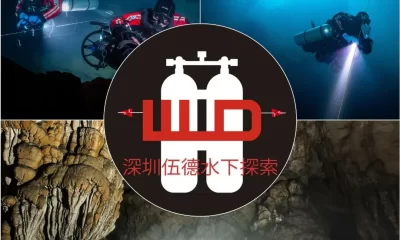Equipment
For the Masses not the Classes: Meet the Horizon
Semi-closed rebreathers (SCR) were the first purpose-built breathers for sport divers circa 1995—Thank you Draeger! But while tekkies clearly needed mixed-gas units, many believed that recreational divers would quickly follow suit with SCRs. Fewer bubbles, no troubles, right? Wrong, the migration never came, and the likes of Draeger, Fieno, and the Hollis Explorer ceased production. Now Italian scuba maker Mares is convinced that they’ve solved the problems with the Horizon—a smart eSCR designed for the masses. SSI Training Director Adam Wood explains.
by Adam Wood. Photos courtesy of Mares
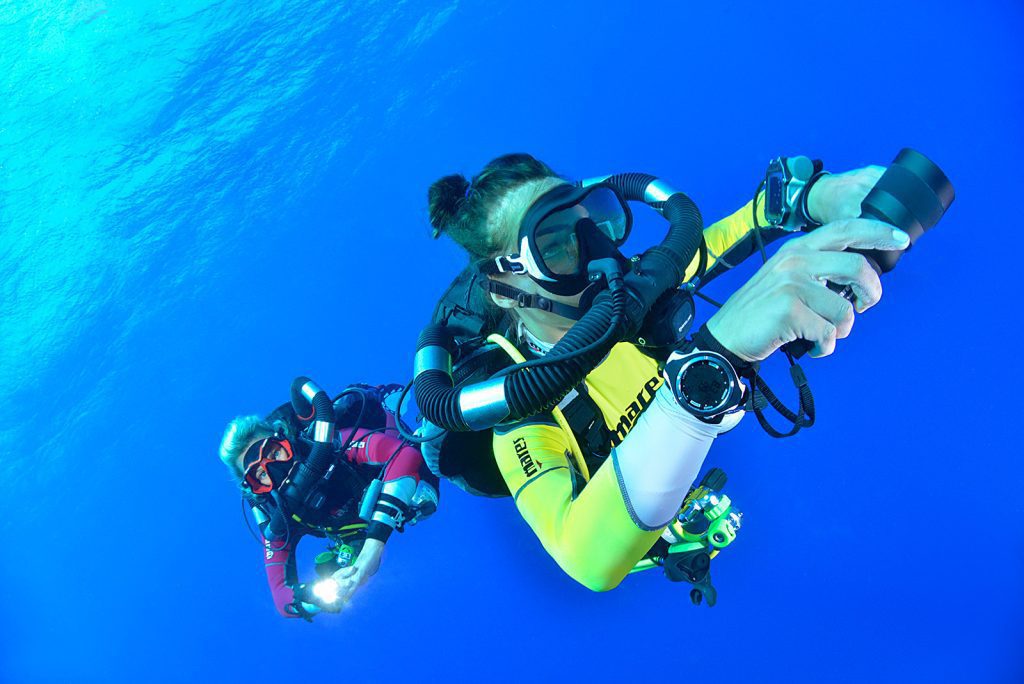
In the past, Mares (pronounced Mahr-ehs) was never a brand you would have associated with technical diving. Their market was warm water, entry-level divers who preferred Italian style. Over the years, however, Mares has been a constant innovator, finding its own unique ways to solve problems where others just replicated past solutions. For example, when Apeks and others were adding crack adjustments to their second stages, Mares used their bypass tube system to deliver superior air flow.
Their high-fidelity testing and development approaches led Mares and Poseidon to become the only regulator suppliers to the US NAVY.
The Mares development team never stopped pushing the envelope, but these efforts magnified when Head Sports (Mares’ parent company) bought Scuba Schools International (SSI). Both Mares and SSI had long-standing beliefs that training developments and equipment innovations must go hand in hand.
SSI offers so much under one roof: swim school, lifeguarding, mermaid, snorkelling, freediving, scuba, XR, and CCR. Most of the Mares product lines complemented these beautifully, and as their educational opportunities changed, so did their catalogue. At that time, Mares wasn’t involved in technical diving, and they saw that it would take a team with knowledge and experience to bring the Mares level of innovation to technical diving.
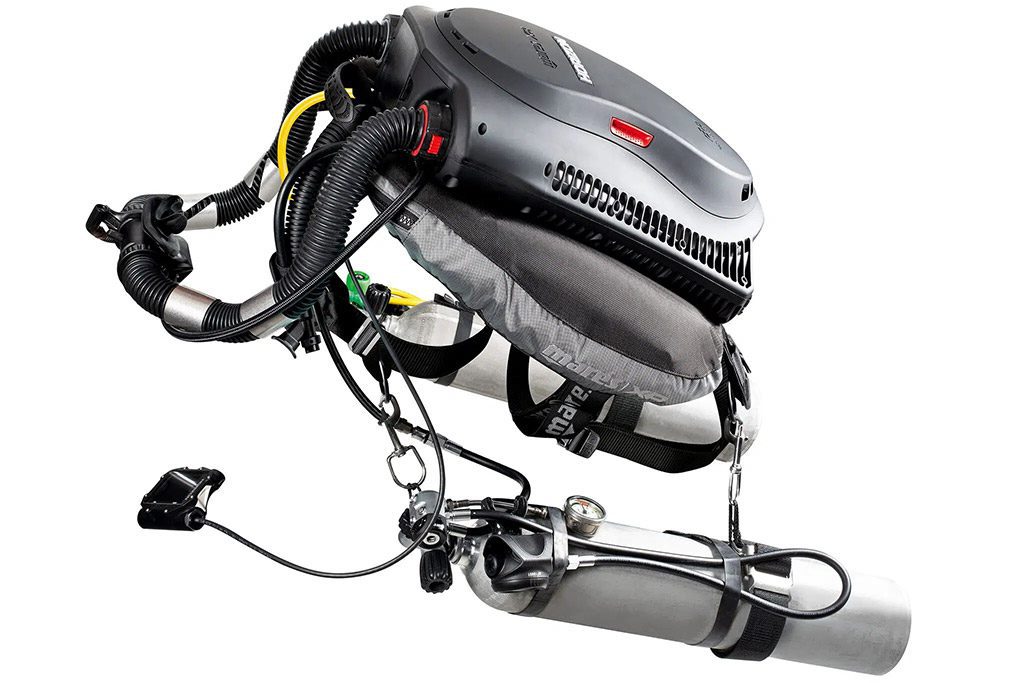
Mares Goes Tech
Mares chose to build a line of technical products from the ground up. They started by training all internal staff—from workshop engineers to product designers and even management staff—in technical diving. This effort began with a three-week training event in Croatia, where they held meetings and delivered SSI technical instruction to help staff understand what technical diving was and what its participants wanted. For Mares, the entry into technical diving meant much more than just delivering a product line; in typical Italian fashion, they had to live it and feel the passion.
From there, the “XR” technical diving equipment line was born. Mares harnessed the potential of its mainstream scuba dealers who now had the option to teach entry level decompression programs through SSI. This project turned out to be a huge success, and what started out as a “soft tech” product line became a complete mainstream choice for technical divers.
The next logical step in the process was to use that same philosophy and dealer/training center base to increase their market share of rebreather training and unit sales. Mares considered purchasing two other mainstream rebreather manufacturers before reaching a deal with rEvo. There were many clear benefits to this choice, but perhaps the most clear was the chance to learn about the rebreather world from rEvo rebreather “guru” Paul Raymakers. Commitment to learning from subject matter experts and willingness to challenge their own ideas and norms is one extremely positive, if often frustrating, Mares trait.
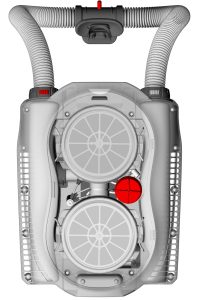
The new project had straightforward goals: Create a rebreather that 99% of divers could (and would want to) use that was as simple to operate as single tank gear while offering the added benefits of longer bottom times and reduced gas use. The real kicker was to try, over time, to make it affordable!
This did not look easy, but Mares was thoughtful in its approach and looked to the past before starting development in earnest. Other brands had tried the “recreational rebreather” thing, and it wasn’t all sunshine and rainbows. Some would say the collapse of VR Technologies and the Hollis Explorer could be attributed to heavy investment in this market with little to no return.
The Mares rebreather had to tick a lot of boxes: It needed to be simple, lightweight, quick to assemble and disassemble, easy to train with, redundant and failsafe without adding complexity and, above all else, it needed to be cheap! One problem with the recreational rebreathers of the past was cost. After training investments, there was not a great difference between these recreational machines and full closed circuit rebreathers; this left the consumer thinking they paid a similar price for a less capable device.
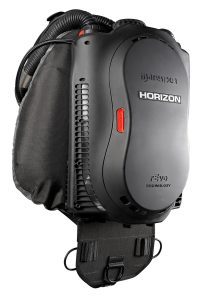
Mares wanted the price to be comparable with OC equipment tailored to the same level of diving. For example, if you could do the same dives on a twinset and two deco stages, then the total cost of the rebreather should be comparable. To keep costs down, mass production was the only option; until now, this was unheard of in rebreather manufacturing.
Another substantial hurdle was convincing current rebreather divers and instructors that this product was not for them and that it never would be. You will never find a reason to sell your JJ or AP and buy a Horizon. Current CCR divers should not try to compare features. The Horizon carves a totally new path that is unlike anything produced before; keep that in mind while we discuss its features in detail.
Let’s start this quite geeky tome with an introduction to some of the Horizon’s main components.
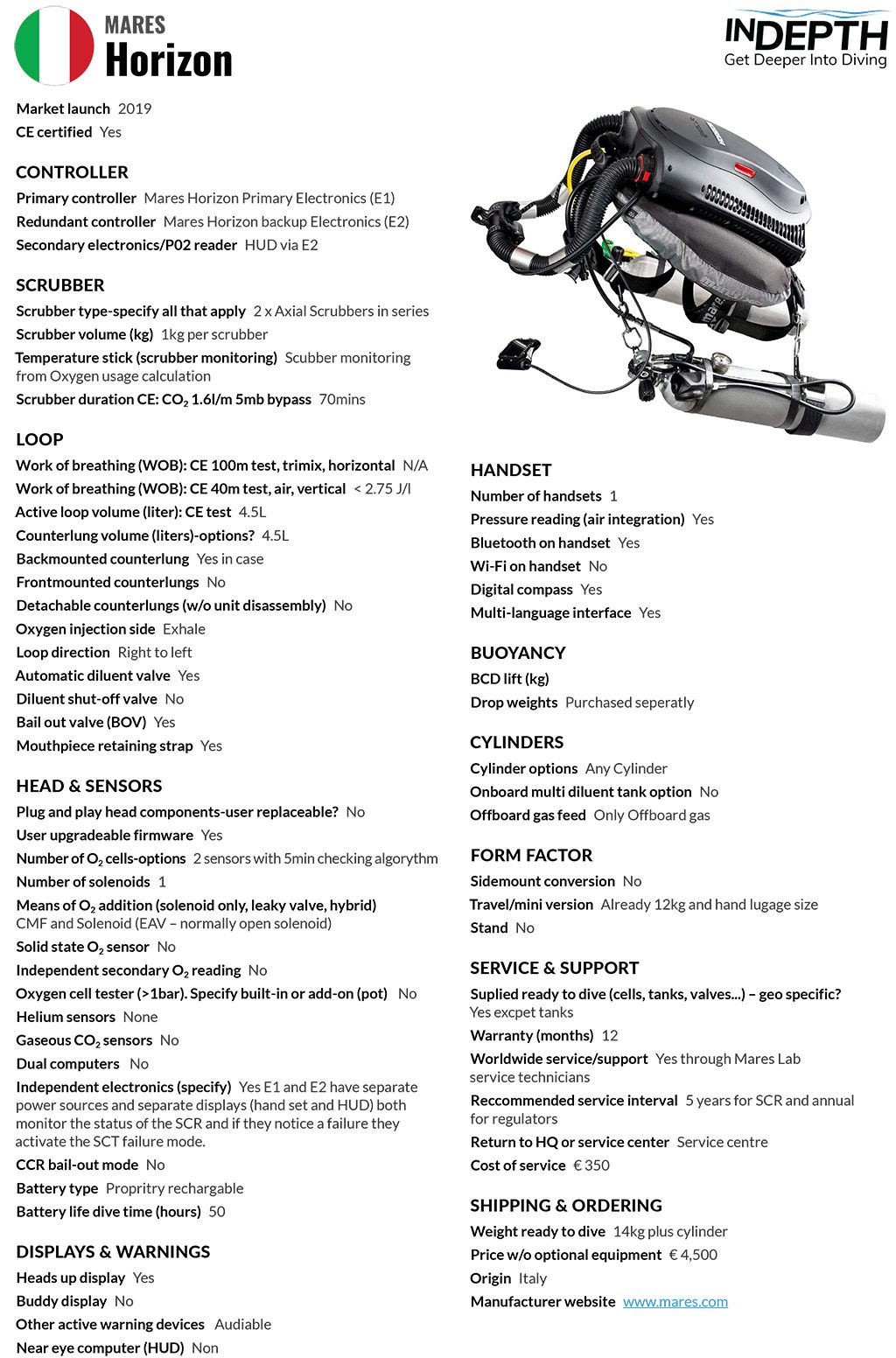
Gas Addition
Electronic Delivery Valve (EAV) – This is the solenoid that opens and closes to allow supply gas to enter the loop. However, unlike a normal CCR solenoid, this one is normally open and current must be applied to close the valve. When in its open state, the flow rate is 25 L/min. This can be reduced to zero by applying current, or opening and closing the valve as required to achieve any flow rate in the range.
Constant Volumetric Flow (CVF) Orifice – Like the constant mass flow (CMF) valve in an mCCR or hybrid CCR, the CVF enables gas to flow at a fixed rate via a fixed orifice whenever the connected cylinder is open. In the Horizon, this is set to 5 L/min. The internal pressure (IP) of the Mares regulators used in the Horizon is not fixed like some mCCRS and will increase as depth increases; as such, the mass flow rate will also increase slightly.
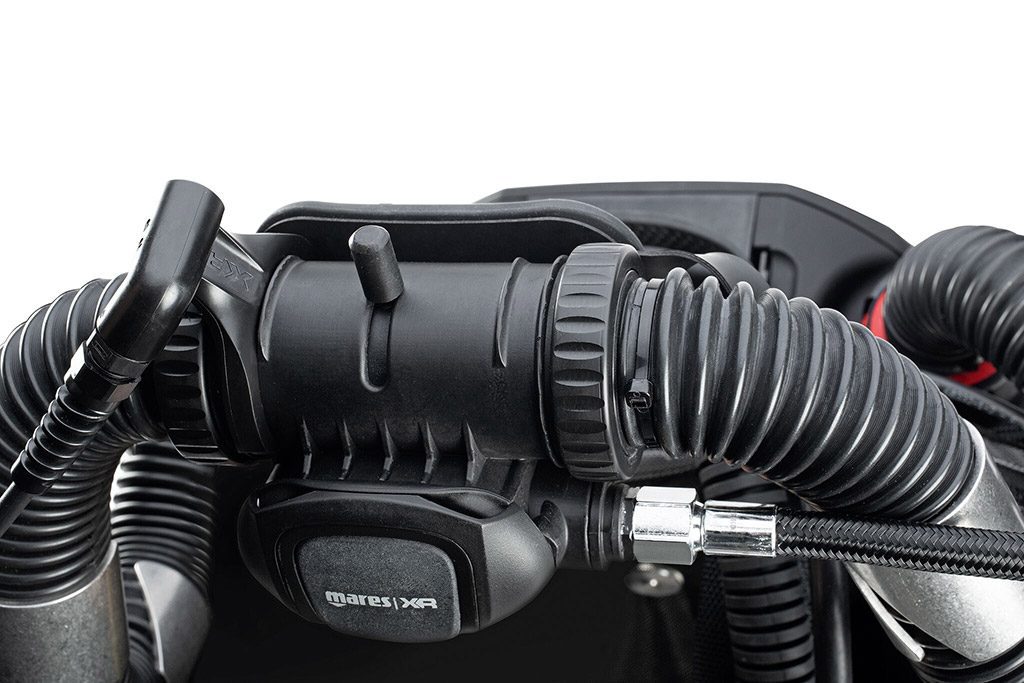
The formula for this is:
Adjusted Flow rate = (IP at depth / IP at the surface) * Flow rate
Automatic Delivery Valve (ADV) – Mounted in the top scrubber compartment, the ADV is essentially a second stage regulator that delivers supply gas when loop volume is low enough to activate the diaphragm.
All three of these gas addition features are supplied from the same gas block. It is important to know that all hoses and gas connections are connected together in one system and are two-way. There are two (double end sealed) quick gas connectors (QGC) for gas on the Horizon: one on the left for bottom gas, and one on the right for decompression gas. The bottom gas regulator has an IP of 10 bar/145 psi and the decompression gas regulator has an IP of 12 bar/174 psi.
When only the bottom gas cylinder valve is open, all systems, ADV, EAV, CVF, BOV, wing, drysuit and second stages on both cylinders are supplied by bottom gas. When the decompression gas cylinder valve is open, all systems including both second stages on the cylinders will be supplied by decompression gas—even when the bottom gas cylinder valve is still open
This makes gas switching on the Horizon super simple. Confirm personally and with the team that you are above MOD and open the decompression gas cylinder valve, tell the onboard computer that you have switched gas, and that’s it. The decompression gas regulator IP overrides the bottom gas regulator IP, and all systems are now supplied from decompression gas. The computer performs some small tasks in the background to ensure that you’re on the right gas, but more on that later.
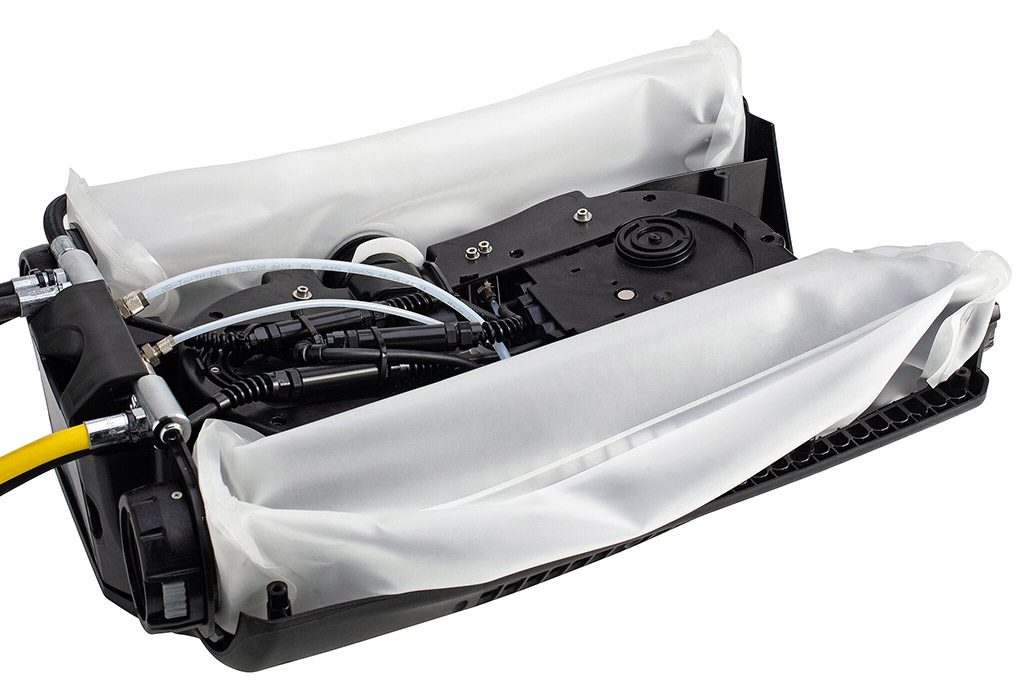
A Semiclosed Rebreather
So we have the basics of a two-gas semi-closed rebreather (SCR) at this point. How do we know what we are breathing and that it is a safe gas? There are some basics to understand. If we add nitrox to an SCR, we will be breathing a gas containing less oxygen than that we supplied it with—how much less? Well, that depends on your metabolism (VO2) measured in liters of oxygen per minute.
A diver at rest might metabolise between 0.6 and 0.8 liters of oxygen per minute at continuous hard work (e.g., swimming in an extremely heavy current). That might rise to 2 L/min, and the most you are likely to see is 3 L/min; however, this rate isn’t sustainable long-term.
It is important to remember that oxygen consumption is affected by changes in work rate and metabolism, not changes in depth. So the same effort at 10 m uses the same amount of oxygen as it does at 40 m. And the Horizon SCR can supply a maximum of 30 L of supply gas per minute: 25 L from the EAV and 5 L from the CVF.
To work out what you are breathing on the Horizon (Loop fraction of oxygen, orFO2), remember that whatever gas is vented from the OPV is the same gas that is entering your body since you’re breathing from the same bag:
Loop FO2 = [(Flow Rate * Cylinder FO2) – VO2] / (Flow Rate – VO2)
For the Horizon, the minimum oxygen content for supply gas is 30%, and the maximum is 100%. The upper limit is clear, but where does the 30% lower limit come from?
If we rearrange the formula above, we can see that a diver with 30% Nitrox as a supply gas and a metabolic rate of 3 L/min requires a flow rate of 30 L/min to sustain a loop FO2 of 22%:
Flow Rate = VO2 * ( 1 – Loop FO2) / (Cylinder FO2 – Loop FO2)
Flow Rate = 3 * (1 – 0.22) / (0.30 – 0.22)
Flow Rate = 3 * 0.78 / 0.08
Flow Rate = 3 * 9.75
Flow Rate = 29.25 ≈ 30 L/min
In the table below, you can see what happens with various flow rates and VO2s when using a 30% supply gas:

The next table shows what happens if we were to supply the SCR with air even with a relatively low metabolic oxygen consumption of 0.8 L/min:

Even for very high flow rates, the gas would be hypoxic (less than 21%). At a moderate or high work rate, the loop FO2 would be far too low. For safety reasons and CE regulations, the lowest acceptable fraction of oxygen in the SCR at the surface is 21%. This is why air cannot be a supply gas and the minimum oxygen content is set to 30%.
A return to the FO2 formula confirms this:
Loop FO2 = [(Flow Rate * Cylinder FO2) – VO2] / (Flow Rate – VO2)
Loop FO2 = [(30 * .21) – 3 / (30 – 3)
Loop FO2 = (6.3 – 3) / 27
Loop FO2 = 3.3 / 27
Loop FO2 = 0.12
During the automated pre-dive sequence, the Horizon will analyse the FO2 of both the bottom and decompression gases to determine if they are in range, +/- 1% for bottom gas and +/-5% for decompression gas. The really cool thing about this process is that it shows the FO2 it’s analysing as it goes, so you know if you put in the gases wrong or if you received the wrong gas from the fill station. This process does two things: It confirms calibration as the calibration process is done with air and ensures each regulator is fitted to the right cylinder of the correct gas.
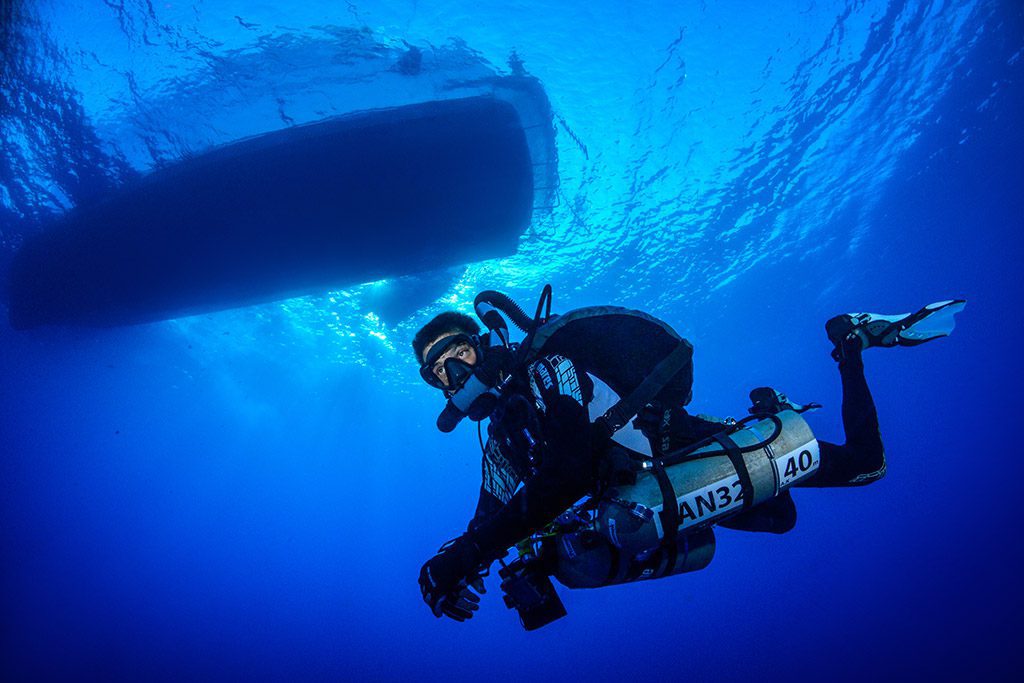
Oxygen Measurement
Another neat feature is that the gas from the EAV is added directly to the cell face of one of the two oxygen cells. This means a periodic gas check procedure can take place to ensure the right tank is open, the cells are performing as expected, and the EAV is opening and closing. The Horizon is equipped with two galvanic oxygen sensors to monitor the gas in the loop. To aid simplicity of training and understanding for the diver, they are only ever displayed as loop “nitrox percentage (FO2) However, in the background, these cells work like any other rebreather, turning oxygen into voltage which can be converted into FO2.
There is one “T” (test) sensor and one “F” (fraction) sensor. The EAV adds gas directly to the test sensor every 5 minutes during the dive; this process confirms that the correct cylinder is open, and it uses a known gas (analysed while the machine was at the surface) at a known depth (taken from depth sensor) to determine if the right FO2 is generated. This first test confirms the T sensor is accurate. The next part of the test requires 20 to 30 seconds of breathing (something we hope the diver is still doing) to mix the gas in the chamber. The two cells are then compared, and any variation will show an error and ask the diver to either end the dive or bail out.
In almost all instances, any error or failure of the Horizon will lead to a failsafe mode scenario where the EAVs power will be cut and will flow gas at its maximum rate of 25 L/min adding to the 5 L/min from the CVF orifice. No matter how hard the diver works, the machine will now maintain a breathable loop. The gas consumption will rise significantly and the diver will be prompted to ascend or bail out.
Calibration is often a pain point for CCR divers, and poor calibration can lead to serious consequences. Some machines have automated processes, some are manual, some require additional calibration kits, and some do not; however, it is always critical to perform the steps exactly as directed to get a quality calibration.
The Horizon simplifies calibration by mechanically integrating the process. The machine will periodically suggest that divers calibrate and will prompt them if the calibration falls out of range. However, it is good practice to calibrate daily. First, the diver selects “Oxygen Sensor Calibration” from the menu on the DC (Dive Controller). The unit prompts the diver to remove the bottom scrubber and remove the cell tray. The calibration confirmation button is located under that cell try so the diver must expose the cells to air or the button cannot be pressed. Like any other rebreather, voltages are stored and values are set.
How Efficient is the Horizon?
Well that depends a little on the setpoint and how hard you’re working, but in practice it is very efficient indeed. With the right choice of gas and setpoint, you can achieve very low flow rates with gentle finning. The setpoint is the FO2 in the loop you would like the Horizon to maintain, obviously this can never be higher than the FO2 of the supply gas and, as a fixed rule, it can never be less than 23%.
I recently completed a dive in the Maldives: I used a 30% bottom gas with a bottom setpoint of 23% and a 70% decompression gas with a setpoint of 63%. Max depth was 40 m/130 ft, and dive time was two hours. The bottom gas flow rate was calculated at 8 L/min and the decompression gas flow rate was calculated at 3.6 L/min. I used 60 bar from my S80 of bottom gas and 30 bar from S80 of decompression gas.
You will note an apparent mistake in the above paragraph: How could I have a flow rate of 3.6 L/min when the minimum the Horizon can supply even with the EAV shut is 5 L/min? That’s the difference between my calculated flow rate and real life. In reality, my VO2 was not high enough to metabolise the loop FO2 down to the 63% setpoint (3.6 L/min) as gas was flowing in at 5 L/min. I was actually breathing 65%, slightly higher than my planned setpoint. All the better for deco (i.e., there were higher oxygen levels). I did actually know that 5 L/min was the minimum during my gas usage plan, so took that into account.
CO2 Removal
The Horizon takes its scrubber design from arguably the best feature of its big sister, the rEvo. The dual scrubber design has many top features, including its low profile axial design: once they’re on the diver’s back, the two scrubbers are vertical. This helps the material to settle without the potential for channelling and distributes the weight evenly and high on the divers back.
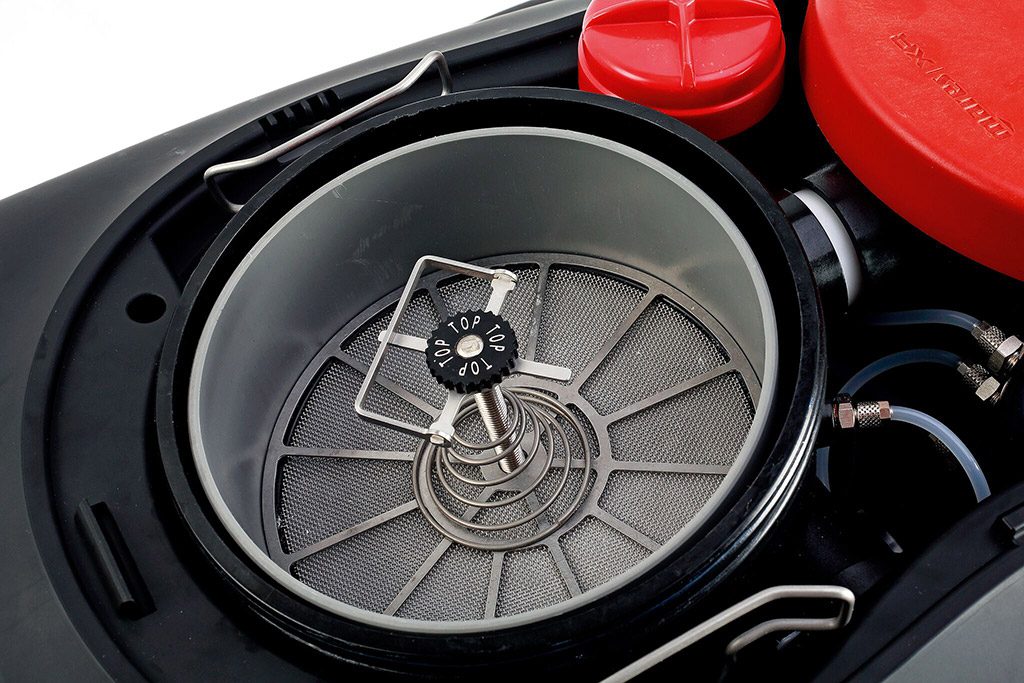
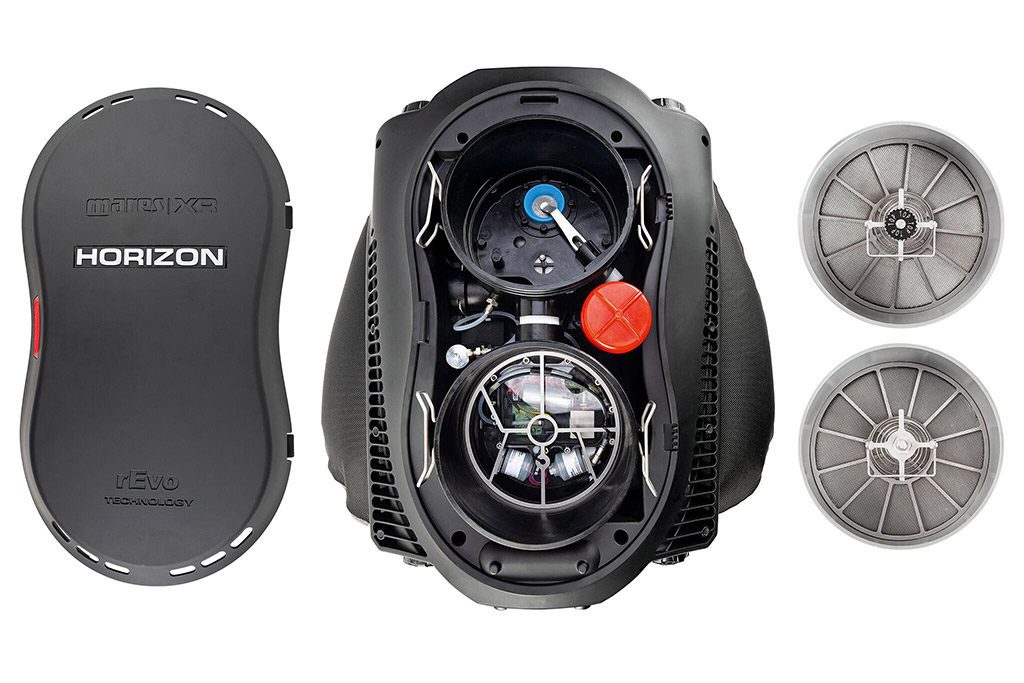
Another great feature is the redundancy of two scrubbers. Even with a breakthrough in one scrubber, the second is there to act as a backup. The Horizon uses two 1 kg Sofnolime 797 scrubbers good for:
> 70 minutes under CE conditions for PCO2 = 5 mbar
(CO2 1. Ll/min, RMV 40 L/min, 2 L tidal volume, 40 m, 4º C)
> 80 minutes under CE conditions for PCO2 = 10 mbar
(CO2 1.6 L/min, RMV 40 L/min, 2 L tidal volume, 40 m, 4º C)
However, we all know CE conditions are not always realistic, so Mares conducted real world tests using the CE apparatus to determine the duration of the absorbent in the Horizon. The test revealed scrubber duration was:
> 180 minutes for PCO2 = 5 mbar
(CO2 1.0 L/min, RMV 22.5 L/min, 1.5 L tidal volume, 40 m, 15º C)
For scrubber durations, the diver has two options based on temperature. If the temperature is less than 15º C, then change both scrubbers after 180 min. If the temperature is greater than 15º C, then change only one scrubber per the scrubber replacement cycle. As the top scrubber is used first in warm water, move the unused bottom scrubber to the top scrubber position, emptying and refilling the now-new bottom scrubber.
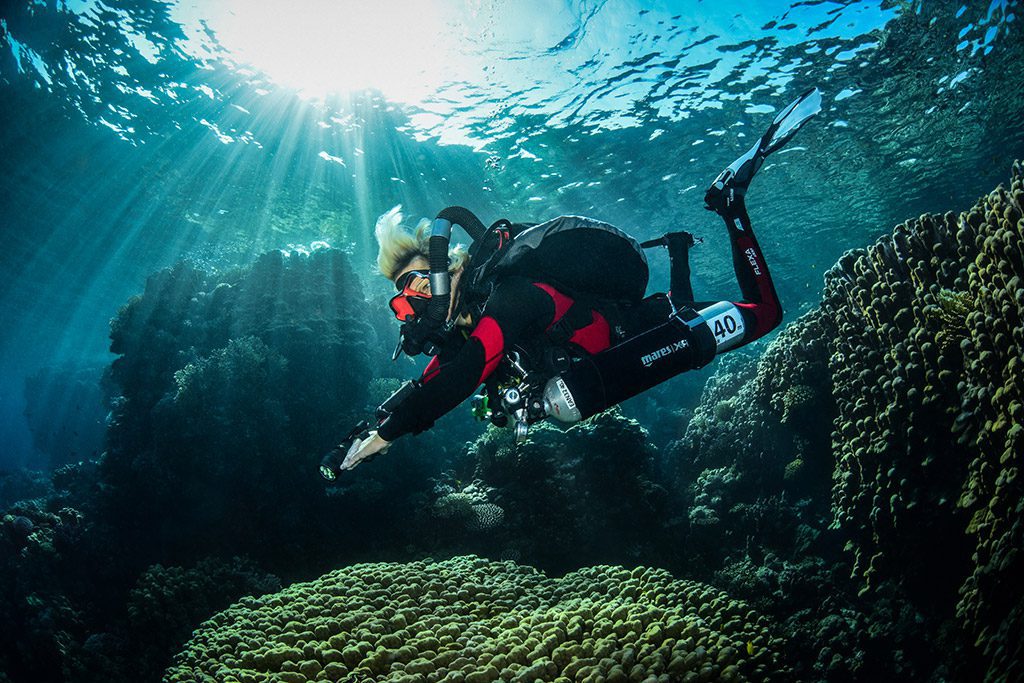
As an additional safety feature, the Horizon tracks the scrubber usage in a unique way, using a process adapted (and simplified) from the rEvo. By telling the Horizon the weight and sex of the diver, it can estimate the CO2 produced by knowing the quantity of oxygen used. As the machine knows the cylinder FO2, the flow rate, and the loop FO2, it can easily determine how much oxygen was metabolised. Oxygen usage is directly proportional to the amount of CO2 produced. The Horizon then uses this figure to provide an estimated remaining scrubber time. If the diver were to work harder (metabolise more oxygen), the remaining scrubber time would diminish. If the scrubber time reaches one hour remaining, a warning is issued. It then repeats at 45 min and 30 min. At zero minutes remaining, the Horizon will go to failsafe mode: opening the EVA, delivering the maximum 30 L/min, flushing the unit with fresh gas, and alerting the diver to bail out.

The Horizon Electronics
The rEvo is fitted with Shearwater Research electronics—these represent a significant portion of the production costs. It was not possible for the Horizon to utilise the same tech and remain within budget. Using their technical knowledge, experience, and growing expertise, Mares decided they could rise to the challenge and create their own controller. Bulhmann had started to be implemented in Mares recreational computers and, looking around the market, it was clear there were very few competitors to Shearwater. Again, after analysing the benefits and drawbacks of the Shearwater products, a Horizon controller needed to be simple to use, with high quality feel and screen layout. It was decided Mares needed to make their own controller.
E1, E2, and DC
Being a life support system, the Horizon needed to have redundant electronic systems to ensure that in the unlikely event of one system failure the other will ensure the power is cut to EAV. These redundant electronics are called E1 and E2 respectively and are located in the electronics module below the bottom scrubber. They are in constant communication with the dive controller (DC) located in the handset.
If either computer loses communication or detects an error, the machine activates the failsafe mode. Each electronic controller has its own battery: the DC battery is located in the handset and the E2 battery in the electronics compartment. The battery for E1 is conveniently located in the separate battery compartment for ease of access. This is basically a USB-C power pack that can be removed for charging away from the unit for instances like liveaboard diving or when it’s not practical to take your rebreather in the house.
Another cool part of that is you can carry spare E1 batteries in case of the “forgot to charge” scenario or when diving in remote locations. E2 and DC both draw their power from E1 and can go from flat to a state ready to dive (Charge state <30%) in only 30 minutes. If you can get the unit next to a power outlet, you can push charge to DC and E2 while E1 is connected to the unit. Normally this is handled by the auto charge sequence, but it can be overridden as required.
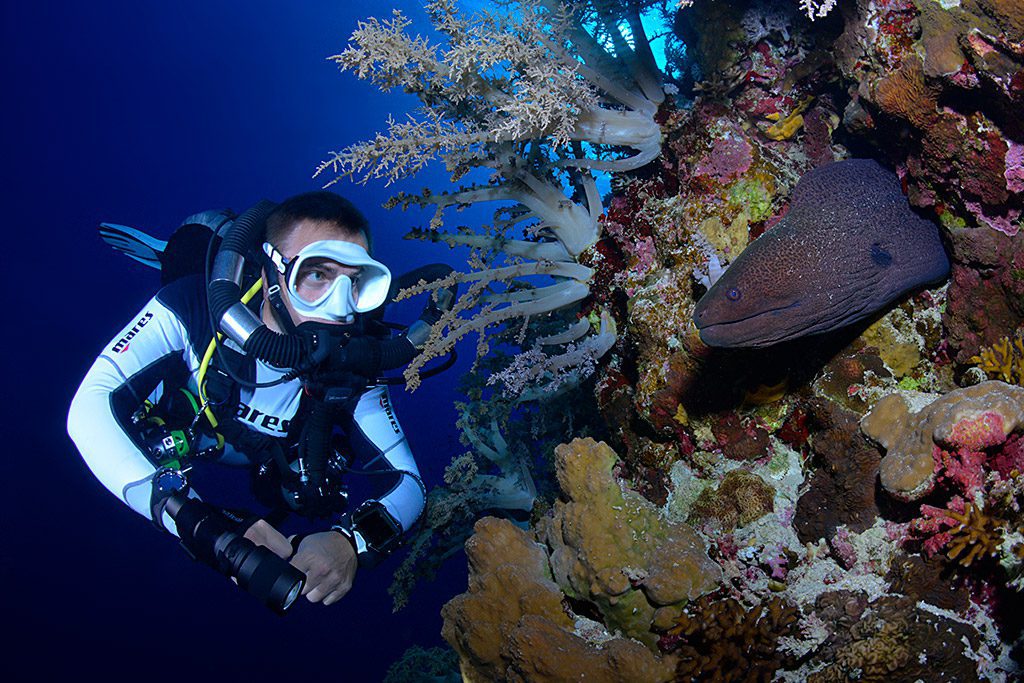
What Is It Like To Dive?
In short, super easy! The exhale resistance is very low and, when in trim, not even noticeable— the work of breathing is <2.75 J/L (joules per litre) with a 75 L RMV, 40 m, 4º C, and 2 kg of 797 Sofnolime. When I explain how it feels to dive, the best way to describe it is, “How you expected scuba to be”—right up until the instructor told you that you go up with inhalation and down with exhalation. You suddenly worked out for yourself buoyancy control is one of the finer points of OC diving.
Cross that with how you thought CCR diving would be… you do not go up or down on inhalation and exhalation! That is until you tried it for the first time and realised that even small changes in depth cause the loop to expand or contract rapidly, causing waves of buoyancy that come and go. On the Horizon, the loop is almost always full; even a moderately fast descent is often negated by the CVF and EAV so the ADV does not activate. There is no need to vent gas from the loop on ascent as excess loop volume just leaves via the OPV without any “full” feeling in the loop. You continue to breathe in and out while changing depth as required; when you reach your new depth, set the wing to achieve neutral buoyancy, and you will stay there. It really is as simple as that.
The user interface is intuitive and simple: current gas and setpoint selection at the bottom, current loop FO2 and remaining scrubber on the right. Current depth and dive time are nice and clear in large font at the top. The centre is reserved for NDL and deco stop depth, time, and TTS. Other info on CNS and O2 are available from the next page menu.
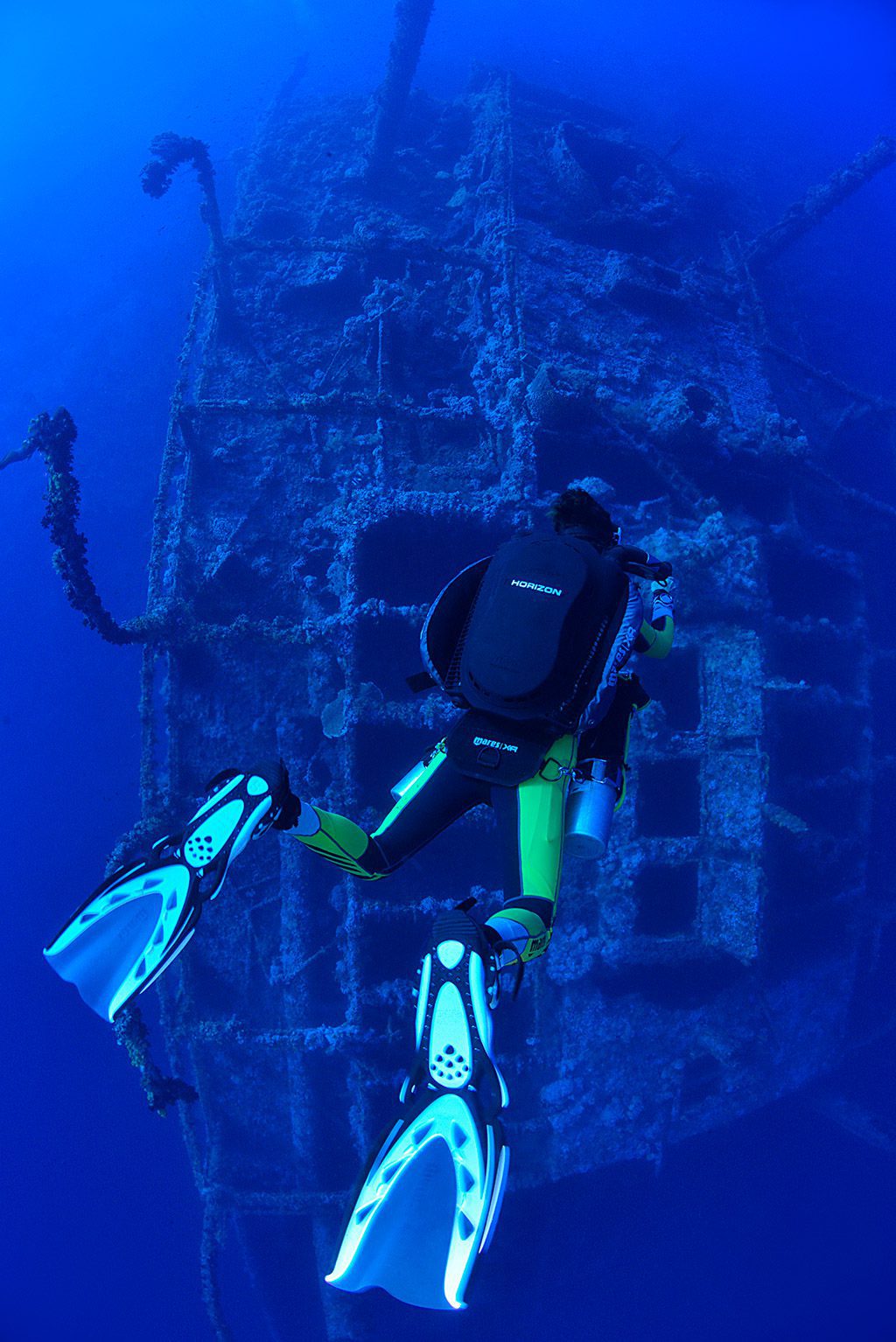
When in surface mode, the whole menu is visible so you can see which item will be selected next, a welcome feature for those used to Shearwater. Menu options show some exciting features still to be launched on the Horizon, including wireless gas integration, digital compass, Bluetooth connection for dive log download and update, plus predictive deco functions. At the time of writing, the menu options are gas settings, pre-jump check, sensor calibration, scrubber settings, gradient factors settings, and dive and DC settings (Brightness, PO2, alarms and warnings, etc.). The only selectable options in dive mode are switch to OC, change setpoint, or change gas; keeping this process simple makes the Horizon feel very familiar very quickly.
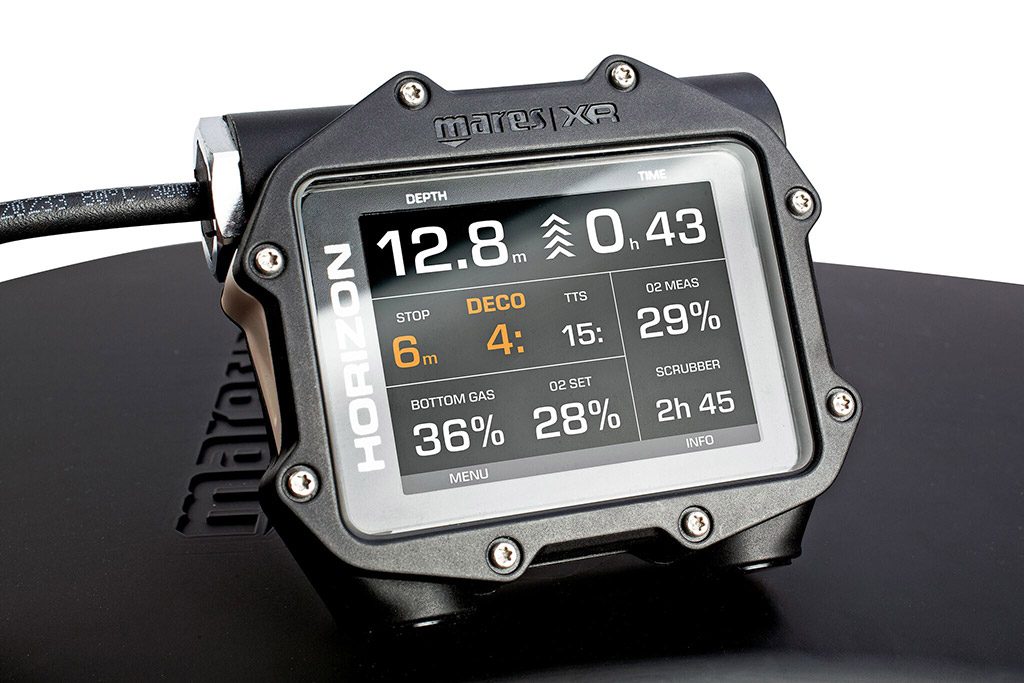
There are two fully integrated weight pockets, one on top and one on the bottom of the case. The top can hold 2.5 kg and the bottom 3 kg. As the scrubber is placed equally on the back and counter lungs run up each side, the trim is pretty much perfect right out of the box. The unit is very short and sits high on the back, so it’s fitted with an integrated buttplate that adds some rigidity and length to the unit to prevent back pain. When you tie this together with a nice loop bungee set of side mounted tanks, even the worst divers trim out super nicely. As the quick loop connectors come from the sides of the top case, you can extend your neck and head back fully without hitting anything, giving good forward visibility in zero trim.
The BOV is extremely lightweight and with silicone soft loop hoses feels nicely weighted in the mouth. The stainless steel hose weights (stolen directly from big sister rEvo) add a quality, premium feel to the unit. The BOV tested as well as the rEvo DSV in loop mode and as well as a Mares regulator in open circuit: something where many have tried but lots have failed. Clearly the best design for a regulator is not the best design for a DSV, so a compromise is always needed. Where is the compromise here? Well, it’s actually quite a neat one: They have had to position the OC exhale ports slightly vertically, meaning you must tilt your head back when you want to clear water from the BOV in OC mode. It’s not a deal breaker, but must be emphasised during training.
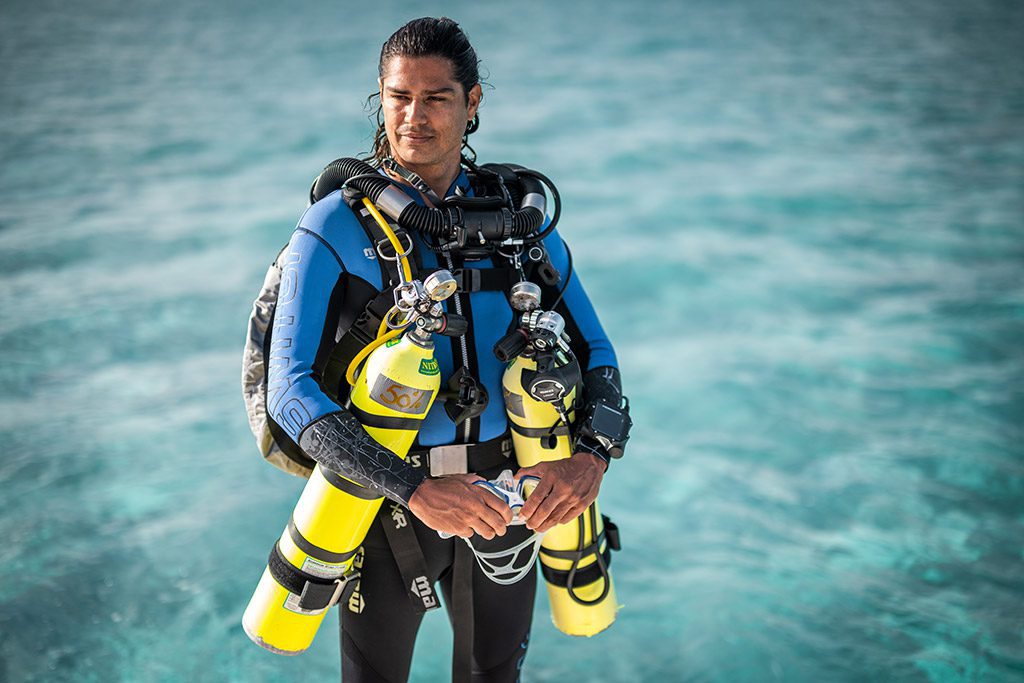
Training, Anyone?
Horizon training represents the perfect collaboration between agency and manufacturer. The steps for build up, failure drills, and general diving were in part specified by instructors and trainers at the point of design. This means the entry level, 30 m, No Decompression program (SCR Diving) takes only 4 dives and the 40 m Decompression (SCR Extended Range) program only 6 (performance is the only way to pass all SSI programs, so more dives may be required) The Instructor level is also easily attainable with 50 hour prerequisite and 3 day instructor program. As the machine and training are both produced “in house,” the manual relates directly to the machine, giving the best possible information transfer.
Divers wishing to cross over from CCR need only 1 confined water and 2 open water dives.
Currently only available through SSI, the prerequisites for training have been purposely made simple with 24 dives, Deep and Nitrox the only requirements for both the 30 m No Deco and 40 m Deco programs. You just need to decide how much time you have and if decompression diving is something you desire. (Upgrade at a later date is also possible by completing only the missing portions).
The academics are short and concise and do not include lots of complicated math as the diver does not need to know this information; these are delivered through SSI’s unique, high-quality digital training platform MySSI and include digital student and instructor manuals, review questions, checklists, skills videos and final exam. This tool allows more skill development time, increasing comfort and safety.
The Horizon is €3,999 and €4,500 for No Deco and Deco versions respectively. For your extra €500, you get a second decompression gas regulator with QGC to allow connection to the machine. Both units are capable of decompression and do not require software updates or unlock codes to upgrade. Training will cost between €700 and €1,000 depending on the instructor and course. So, for €5,500, a diver will be trained for accelerated decompression to 40 m with dive times up to 3 hours.
To get comparable training and the equipment on open circuit (twinset or sidemount fully equipped with stages to allow 3 hours diving and training, plus accelerated deco training) will be close to €4,000. Mares hopes that the success of the Horizon will allow further efficiencies in mass production allowing them to recoup the R&D cost sooner and then make the product even more affordable.
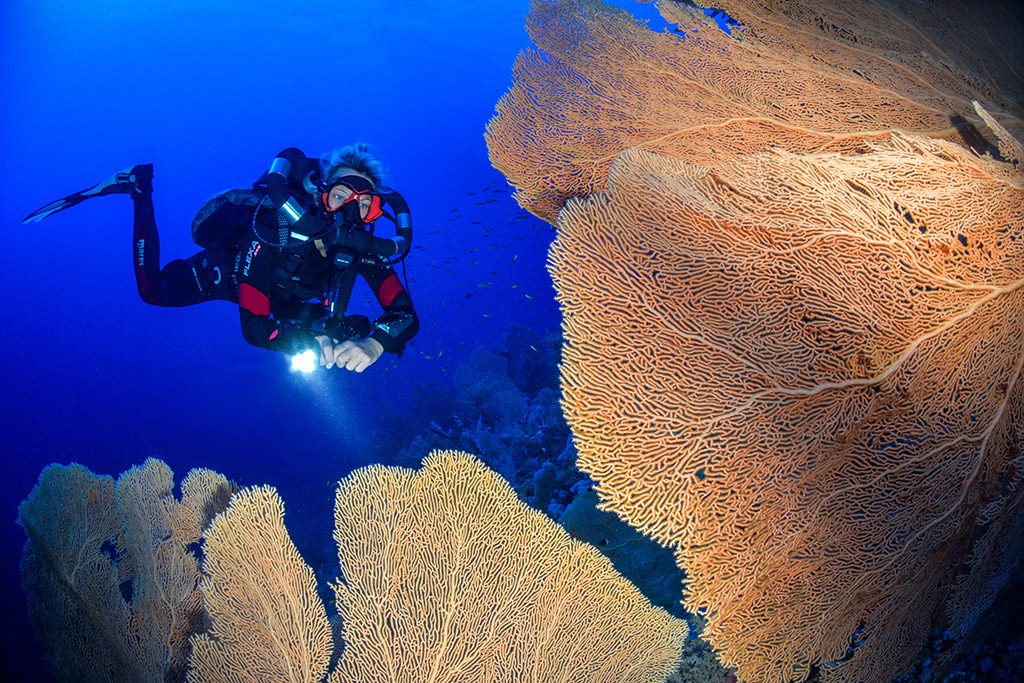
Post-Dive Debrief
What is it like to live with? Simple and easy! After diving, you remove the loop, back cover, two scrubber caps, and both scrubbers. The only part that cannot be flushed with fresh water and disinfectant is the cell tray that hangs neatly on the top scrubber lock. You can rinse the entire machine and be ready to start your build checklist in under 2 minutes. There are two OPV-style pull dumps at the bottom of both counterlungs; these are not used during diving at all and are there only to serve as a very efficient way of draining the cleaning fluid. The entire internal system is open to fresh air and you can see the insides of the counterlungs, so drying is much faster than other rebreathers.
Travelling with Horizon was a significant part of the design brief. At only 12 kg ready-to-travel and being very low profile, it can fit in the bottom of your dive bag comfortably. The loop separates and packs down to almost nothing, you must now put two regulators in, and you are ready to rock! Most of the time, for 1-week warm water diving, I fit all my dive equipment, clothing, and SCR in one suitcase under the 23 kg standard airline weight limit. It’s as simple as travelling with OC.
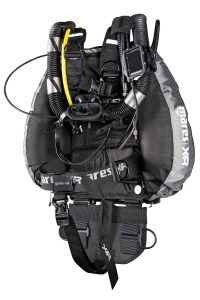
However, part of the Mares model is that you might not need to travel with your unit—in fact, you might not even own one. The Horizon is perfectly suited to the rental market. There are cost incentives in place for dive centres to have multiple units on the shelf ready for the travelling diver to roll up and take for a spin.
Ongoing costs are reduced as much as possible: every six months, you should change one oxygen sensor (€70) and annually service the regulators (€95 each). There is no annual routine maintenance for the Horizon itself until year five. There are very few O-rings in the system, and these are inspected every buildup so will be replaced as required making the unit service interval every 5 years! Using only 1 kg of lime for every 3 hours of diving in warm water, the machine is very efficient. I find that an 11.1 L of 30% (€8) will last 2 to 3 dives and 11.1 L of 70% (€25) will last 5 to 6 dives.
Because things do not always go as planned—and Mares understood that from the beginning—the design of the Horizon makes it very easy to remove almost any part to send for repair/service. The handset can be disconnected, the HUD can be replaced, and all batteries are replaceable and not potted. All these items need to be completed by a qualified engineer. Note that SSI ensures that all Horizon instructors are able to complete all unit maintenance and all Mares distributors can train Mares Horizon lab technicians.
I hope this article has shown some of the unique challenges Mares has overcome to make something very different from other options on today’s market. I urge you all to take a try-SCR experience and remember what it is that a recreational diver is really looking for. I believe the Horizon fits that purpose perfectly.

Adam Wood is an SSI International Training Director for recreational diving and SSI Extended Range Business and Training Director. He has written SSI’s market-leading range of digital programs for Open Circuit, Closed Circuit, and Overhead Environments. Adam also owns Divemaster Scuba, a full-service SSIDive Centre in the UK with two arms: one specialising in training recreational diving from Kids Scuba to Instructor and another focused on CCR. As a manufacturer-approved warranty and service centre for most major brands, they lead the way for equipment maintenance and repair. In addition to these roles, Adam is an active member of the dive community through various organisations and professional bodies, including as Rebreather Training Council representative for SSI, CCR ISO committee member, Santi brand ambassador, Reel Diving Ambassador, product design and tester for many manufacturers, BBC safety and support diver, and more. His passion is teaching and passing on knowledge and skills in recreational, technical, and rebreather diving at the instructor/instructor trainer level—to constantly raise the bar of scuba diving and challenge old perceptions and philosophies to make exceptional thinking divers and dive professionals.






























